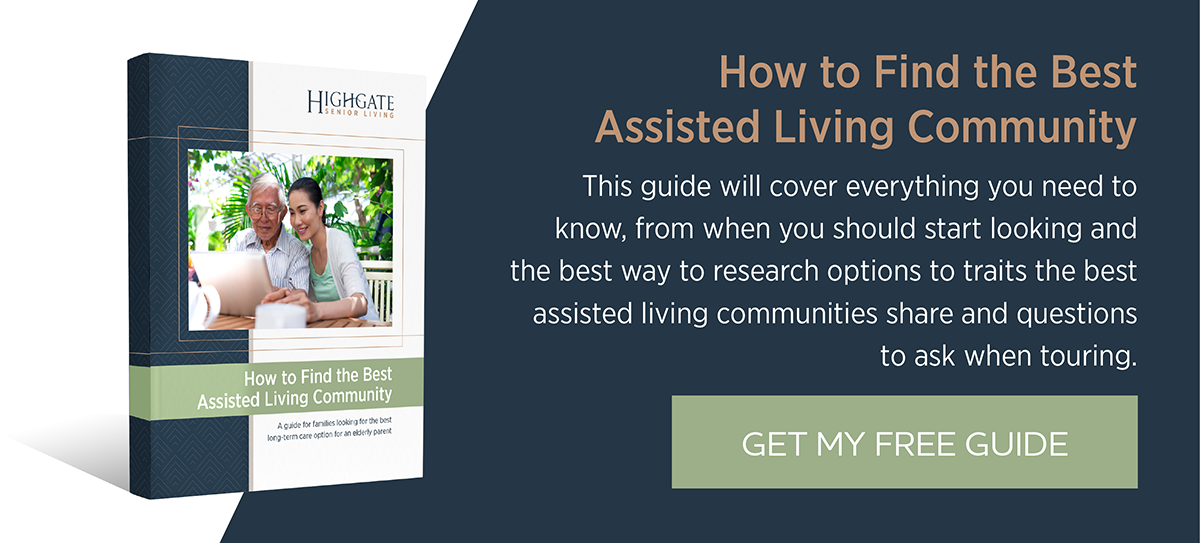
When you take a tour of an assisted living facility, it can be hard to know if that’s what it’s really like or if they’re just trying to sell you something. Sometimes you can tell from the minute you walk in.
“If your visit doesn’t begin with several questions about your family, your loved one, and the type of community you are looking for, be cautious that the community isn’t truly focused on your needs, wants, and desires but instead is more focused on showcasing what they have to offer,” says Tiffany Van Heel, marketing coordinator for Highgate Senior Living.
Jeremy Glover, Community Relations Coordinator at Highgate at Bozeman, adds: “The line of discussion should be about the person versus the community. The salesperson should spend quality time listening to genuinely understand how the community can support the individual or couple’s needs and interests.”
The benefits of an unplanned second visit
Even if your first visit goes well, always pop in unannounced for a second visit, and try to go at a different time of day so you can see how it compares to the first visit. Unannounced visits are helpful because they allow you to see the assisted living facility and its team members during their regular mode of operation rather than during what might have been a carefully prepared visit.
In a more candid and less-staged environment than the regular tour, you may be able to observe some of these little-known pitfalls and subtle warning signs that maybe this isn’t the right fit for your loved one.
Something Doesn’t Smell Quite Right
The way an assisted living facility smells can tell you a lot about the place, the people who work there, and the quality of service provided. Look past the furnishings and into the corners, baseboards, and windows. Resident rooms should be clean and spacious, and the facility should be free of unpleasant odors.
If it has a bad odor, it might mean that caregivers aren’t giving residents a bath on a regular basis, the facility isn’t being cleaned regularly or has poor ventilation, or perhaps there is spoiled food in the kitchen. How can the assisted living facility provide high-quality services to the residents if they can’t even maintain their facility properly?
There Aren’t Any Pictures or Awards Displayed
When you’re looking for the best assisted living community for your loved one, you want to make sure they’re cared for by people who truly care about their residents. Notice the staffs’ attitude and friendliness and look things that might indicate the staff go above and beyond, such as displaying pictures they’ve taken with residents or awards they’ve won for the care they give.
Because assisted living communities are not regulated nationally like nursing homes, it can be hard to know if the community you’re considering places a high value on the relationships that form between their care partners and residents. Look for award displays that indicate the assisted living facility has been recognized for its programs. Some common awards include the Best of the Best Awards from the Assisted Living Federation of America and the National Center for Assisted Living Awards Program.
When You Overhear Conversations, the Tone Is Sad
Depression is common among older adults; however, it is not a normal part of the aging process. When you walk through the dining room and community rooms, listen to how the seniors speak to one another. Look for indications that may represent the overall mood in the community to determine resident satisfaction.
The best assisted living communities understand the important role friends and family play in residents’ social and emotional well-being. There are community spaces where the residents can spend time socializing with one another and their visiting family members. Visiting hours are not restricted.
Additionally, assisted living communities that adopt a positive approach to care often focus not on what’s lost but on what’s left and concentrate on what can be done rather than what can’t. This helps care partners be respectful and patient when they talk to the residents and helps the residents feel happy where they are.
“Ultimately, you should follow your gut,” Van Heel says. “If something you encounter or experience doesn’t feel quite right, there is probably a really good reason why. Those are your red flags.”
For more tips on how to find the right assisted living facility for your loved one, download our eBook, How to Find the Best Assisted Living Community.





